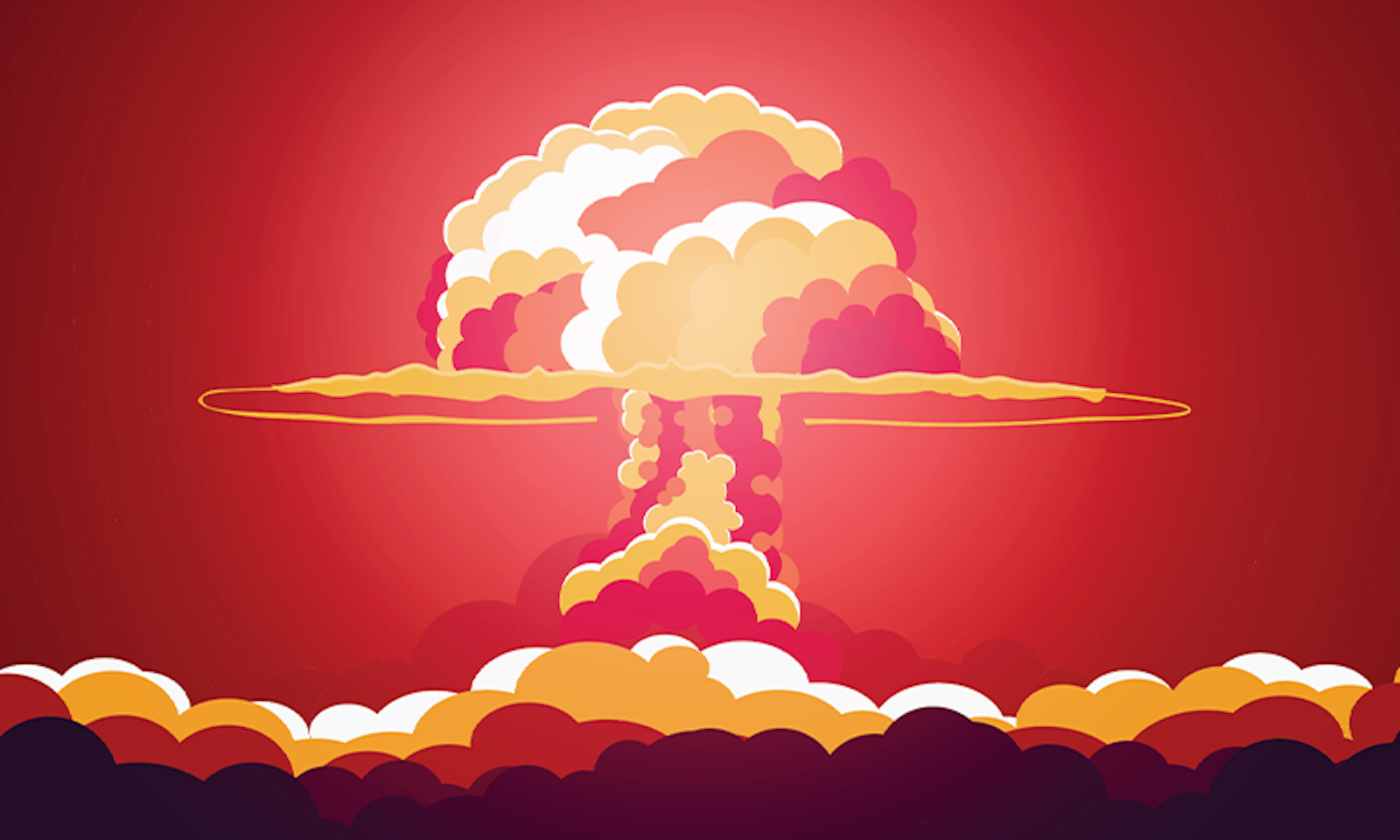Over time, dust collects on the camera’s lens, obscuring the view outside the silo. Only when someone “goes out to clean” is the view of the desiccated landscape—a lone tree leafless on a dead hill—clear again. In Apple TV+’s new sci-fi series Silo, set after an apparent nuclear apocalypse, the people of the silo—a monumentally tall underground shelter—cheer after someone wipes the lens clean. But “going out to clean” is no honor: It’s a death sentence. Cleaners ceremoniously don a hazard suit that keeps them conscious long enough above ground to dust off the camera. Once cleaners start climbing that dead hill—they’re consistently curious to see what lies beyond—they collapse out of breath, apparently suffocating. The people inside watch the live feed, piped onto window-like screens, even when there’s no one out to “clean,” to remind themselves that nothing survives beyond the silo.
In the season finale, which aired last week, you discover whether post-nuclear Earth actually is as desolate as it appears (the dead hill, the leafless tree). The riveting story follows a character, Juliette Nichols, who resolves to uncover why the silo’s police determined her lover’s death a suicide, which ultimately leads her to expose the dystopian nature of silo society. I found the show equally thrilling and sobering. It reminded me that we live in our own quasi-dystopia: Russia’s invasion in Ukraine makes for an “exceedingly dangerous nuclear situation,” according to the Bulletin of Atomic Scientists. This means that more or less any day could be the day when civilization goes up in smoke. And that would be just the start of the trouble. That smoke, heated by the sun, would loft high into our atmosphere, above the rain, and block out the sun, possibly for years, causing temperatures to plummet in what’s now famously called a “nuclear winter.”
A short new video from the Future of Life Institute, dreamed up and scripted by its president, the MIT physicist Max Tegmark, a Nautilus contributor, shows how an all-out nuclear war between the United States and Russia might play out. It relies on up-to-date climate, crop, and fishery models, published in a 2022 Nature Food paper—along with other research and non-classified military information—to simulate, as accurately as possible, how bad the environmental fallout could be.
“Earth gets freezing cold, even during the summer, with farmland in Kansas cooling by about 20 degrees Celsius, or 40 degrees Fahrenheit,” the narrator says. Over 5 billion people would starve to death. Virtually all North Americans, Europeans, Chinese, and Russians would perish.
That’s scary to envisage, and that’s the point, argues climatologist Alan Robock, and his colleagues, in a new paper published in Atmospheric Chemistry and Physics. Fear of nuclear winter has “helped save the world, so far,” they write. “Nuclear winter theory helped to end the nuclear arms race in the 1980s and helped to produce the Treaty on the Prohibition of Nuclear Weapons in 2017, for which the International Campaign to Abolish Nuclear Weapons received the 2017 Nobel Peace Prize. Because awareness of nuclear winter is now widespread, nuclear nations have so far not used nuclear weapons.” But the mere existence of nuclear weapons is always a threat.
Even a “limited” nuclear attack, accidental or intentional, could escalate, leading to global annihilation. The way to avoid this, according to Robock and Tegmark, is to keep the fear of nuclear winter alive in our minds until we reduce stockpiles of nuclear bombs. (As of early 2023, nine countries possessed roughly 12,500 warheads, according to the Federation of American Scientists, with Russia and the U.S. holding 89 percent.)
The reality Silo imagines, where at least 10,000 humans survive a nuclear winter, is terrifying. Possessing centuries-old “relics” from before the nuclear war—things like hard drives and tourist brochures—is strictly forbidden to keep people in the dark about life before the silo, ostensibly to content the masses with life underground. The show illustrates the challenges of humanely running a society in such a cloistered condition—a scenario to avoid at all costs. To my mind, Silo’s as much of a public service announcement as the latest scientific simulation of nuclear winter. Consider watching it in that light.
Lead image: LeoEdition / Shutterstock




























